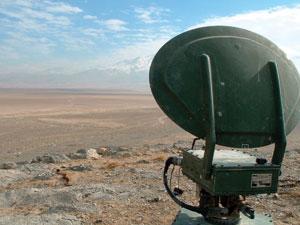Cyber Threats Should Be at the Top of U.S. National Security Concerns
In most ways, the United States is safer today than at any time in nearly a half century. Nothing on the list of serious threats to U.S. security compares with that once posed by the Soviet Union with its tens of thousands of nuclear weapons. There is concern in the near-term about the potential for rogue states such as North Korea and Iran to acquire and employ nuclear weapons. In the longer-term there is the question of China’s potential to become a military superpower. There is the enduring problem of terrorism. But classic threats to the nation’s survival or its core interests are hard to imagine.
There is, however, one exception. This is the danger of attacks on cyber infrastructure. Most Americans confront cyber threats in the form of spam, malware or viruses that affect their computers and IT devices. But the dangers are much more significant. Today’s Wall Street Journal reported on a Department of Energy report warning of major vulnerabilities to the computer systems that control the nation’s electricity grid and that both Russia and China are conducting surveillance of the grid. Similar efforts are underway to conduct surveillance and even intrusion into critical computer systems, particularly those operated by the military.
The final report of the independent panel that assessed the 2010 Quadrennial Defense Review contained the following warning: “Cyber threats against the United States are increasing. The Panel is particularly concerned that the U.S. government remains poorly organized and prepared to defend against those threats. The United States lacks legal authorities for the information age, and capabilities and responsibilities are misaligned within the U.S. government.” So serious is the potential threat that some senior defense sources have urged the services and combatant commands to develop contingency plans for operating without their computer systems and IT networks.
The administration has taken steps to improve its ability to conduct cyber operations. At present, the focus of government efforts is on protection of critical government networks and systems. However, as the independent panel points out, our military is highly dependent on private companies for logistics, sustainment and support. Virtually all military platforms, weapons systems and munitions are produced by private companies. Were the networks and computers these companies operate to be successfully attacked, it would truly be the equivalent of an electronic “Pearl Harbor.”
In the 1920s and 30s the world watched as nations experimented with a new generation of weapons systems and technologies — tanks, aircraft, radios, submarines, etc. — that became the basis for the combined arms approach to warfare that would dominate from the 1940s onward. Today, we are watching nations, groups and even individuals experiment with a new set of technologies and techniques that could constitute the future of warfare. Recent attempts to employ cyber attacks in conjunction with political threats (Estonia) and military operations (the Russo-Georgian War) may be harbingers of things to come, just as the Spanish Civil War served as a proving ground for technologies, tactics and techniques that became central to combined arms operations in World War Two.
The U.S. has an enormous reservoir of capability to conduct cyber operations, both defensive and offensive. Most of them reside in the private sector, including in well-known defense companies. The challenge for the U.S. will be to find new ways of harnessing this talent and to do so before disaster is inflicted on this nation.
Source: Lexington Institute


